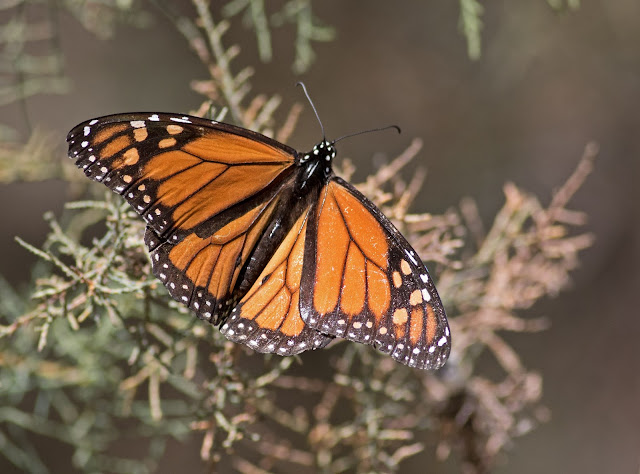Berthelot's were everywhere and I also flushed Common Sandpiper, Green Sandpiper and Little Ringed Plover. Ruddy Shelducks, Pied Wagtail, Little Egret and Trumpeter Finch completed the list. There is no doubt that water is the key to good birding on a desert like island. I noted lots of dragonflies, damselflies and other interesting insects but I concentrated on the birds, mentally noting that a return visit would be in order. Ha! - the weather on my subsequent return was much cooler and a half gale was blowing down the barranco - not an insect to be found. One of the dragonflies was obvious - the Lesser Emperor but of course all were hyperactive in such heat. As my water supply ran out I thought that I should return to the car - we had other birds to see.
Down at the other end of the dam there is a massive goat farm and the Black-bellied Sandgrouse take advantage of the feed put out for the thousands of goats. Sod's Law prevailed all the goats were in the most distant fields though there were literally hundreds of sandgrouse flying about - mainly between the barranco and the goat fields. Don't be put off by the entrance to the farm - just drive to the end of the track and park adjacent to the blue containers. Anyone we saw just waved, not the same as in the UK where the usual greeting is "get orf my land"
The path down to the barranco is a bit precarious but it is well worth it, I finally got some shots of BbS, albeit at a distance and the Black-winged Stilts obliged.
 |
| Black-bellied Sandgrouse - my holiday bogey bird - perhaps next time! |
Time to be off again, this time Betancuria where the African Blue Tit can be found, I also wanted to find a Monarch butterfly and as the temperature was on the up I was confident. Immediately after we had parked in the lower car park, 1 euro for the whole day, about one thirtieth of what Brighton City Council charge, I saw a "lolloping" Monarch and managed some shots. Just a few more yards into the town and I heard the distinct tones of an African Blue Tit, not vastly different from our home grown variety. We waited patiently and sure enough one emerged and posed for us.
In the town centre Monarchs were everywhere, so whilst Liz went shopping I staked out a patch of Decaisne's Viper's Bugloss and Bougainvillea. Plain Tigers had been reported but I saw none, though whilst snapping the Monarch I was photo bombed by a hyperactive Striped Hawk Moth which I just managed to capture.
On return to the car park I heard the scratchy call of a Sardininan Warbler, sure enough, in the palms right next to the car there were three of them and not one would come out into the clear to be snapped. God knows what the other tourists thought of the mad Englishman peering into the bushes.
Finally, exasperated, I gave up as there was one more place to visit - the Mirador de Las Penitas where I had a date with some well known Ravens.
After a long drive, some of it through some narrow mountain roads, we arrived back at the hotel and had a well earned drink to celebrate a very successful three days, time for rest and some shopping in Caleta de Fustes.


























No comments:
Post a Comment